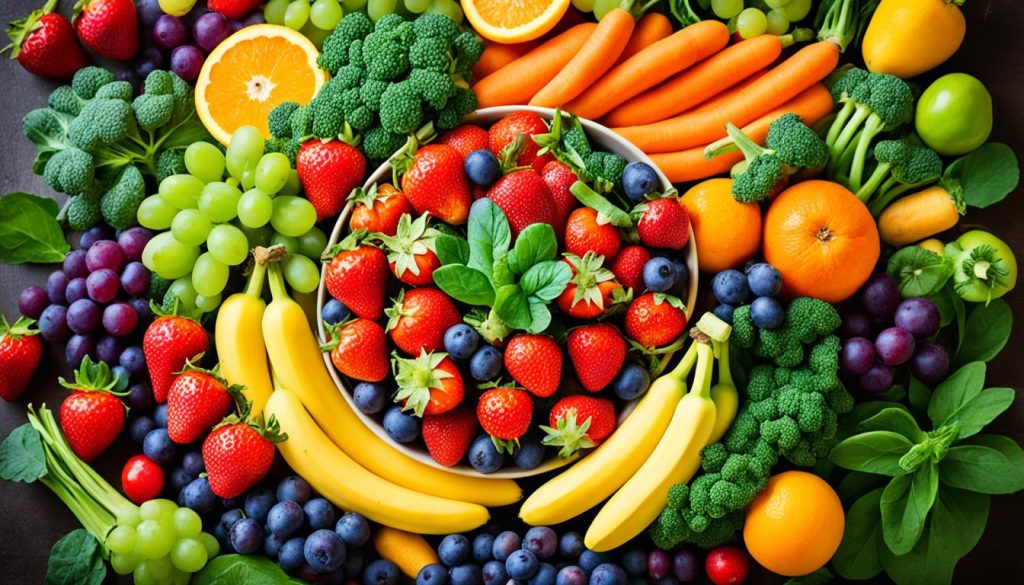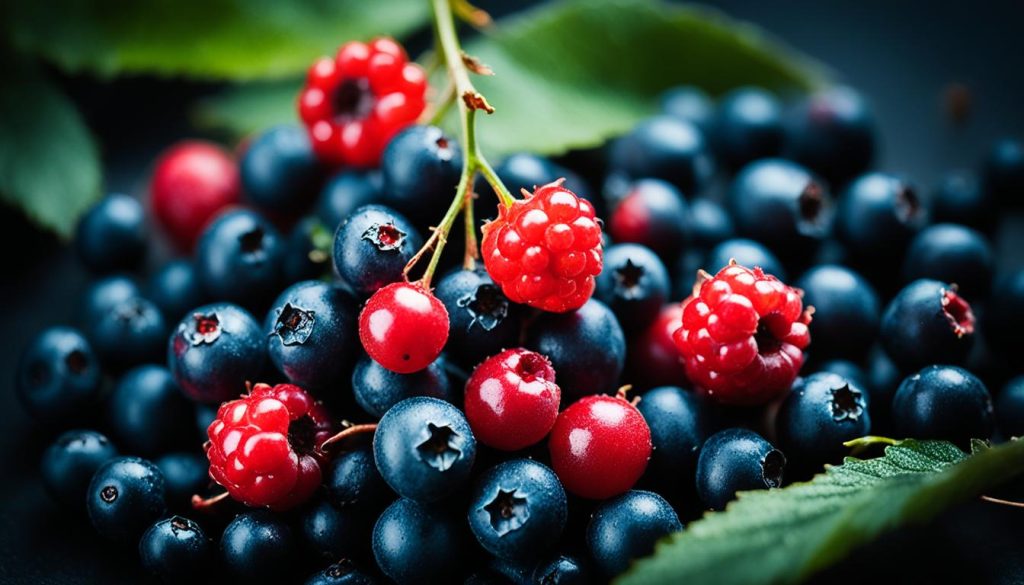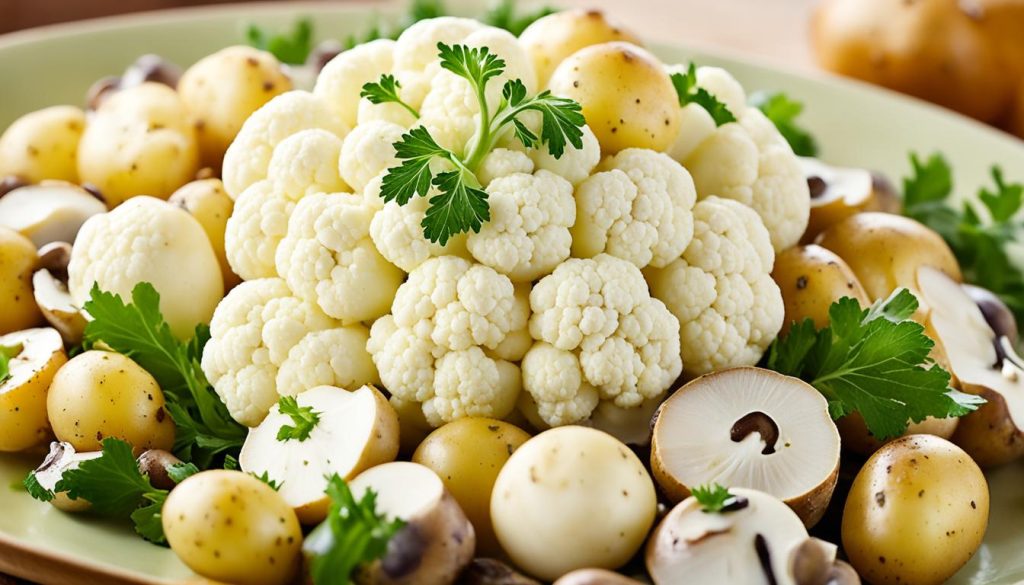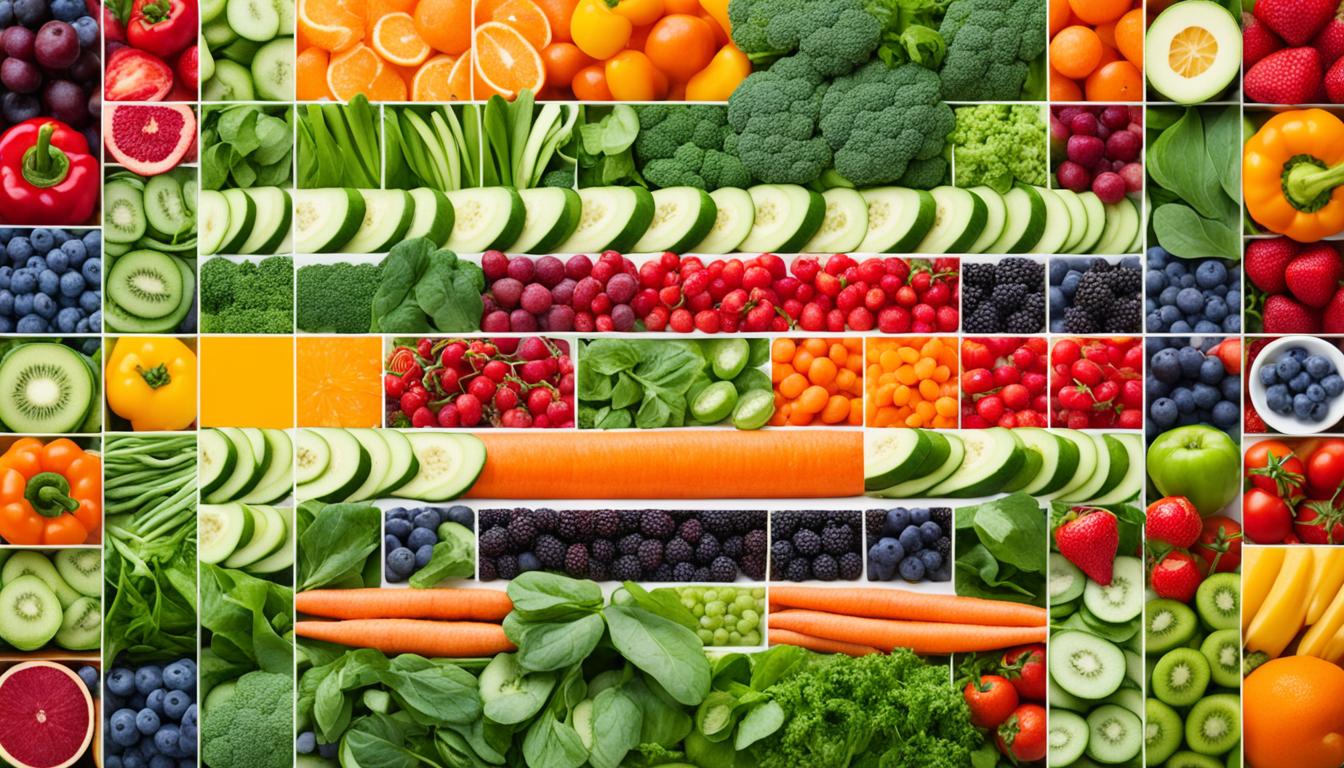Ever wondered why health experts tell us to “eat the rainbow”? It’s not just for fun. Colorful fruits and veggies are packed with nutrients that are great for our health. The bright colors of these foods mean they have different nutrients and health perks.
Each color in fruits and veggies often points to specific antioxidants and vitamins. These are key for boosting our health. By eating a variety of colorful foods, we can make our diets better and fight off diseases.
This colorful diet can help our immune system and brain work better. It’s a simple way to stay healthy.
Quick Recommendation: Our blog takes you through the many health benefits of fruits and vegetables. If you're interested in really taking your knowledge to the next level, we recommend The Miraculous Power of Fruits and Vegetables.
Introduction to Colorful Fruits and Vegetables
Looking to boost your health? Start by adding color to your meals. Colorful fruits and vegetables are not just pretty; they’re key for good health. The colors come from phytonutrients, which are good for you.
Try eating the rainbow to get a variety of nutrients. Each color of fruit and vegetable has its own vitamins and minerals. For instance, tomatoes and strawberries have lycopene, while spinach and kale are full of chlorophyll.

More people are eating a variety of colorful foods now. They know it’s important for their health. This shows how eating foods with different colors can improve health.
Adding colors to your meals makes them fun and gives you many nutrients. Next time you shop, choose fruits and vegetables of all colors. This will help you stay healthy.
Red Fruits and Vegetables and Their Benefits
Red fruits and vegetables are more than just colorful. They are full of nutrients that boost your health. Foods like tomatoes, strawberries, and beets are great for your well-being.

Lycopene is a key nutrient in many red foods. It helps lower cancer risk and supports heart health. Tomatoes are loaded with lycopene. Enjoy them in salads, sauces, or soups to get these benefits.
Red berries like strawberries are also packed with antioxidants. These antioxidants fight oxidative stress and inflammation. Eating strawberries can increase your antioxidant levels in a tasty way.
Red fruits and vegetables are good for your heart too. Beets, for example, have lots of nitrates. These nitrates can lower blood pressure and improve heart function. Try grating beets into salads or blending them into smoothies for a heart-healthy snack.
Orange and Yellow Fruits and Vegetables for Immune Support
Explore the bright world of orange and yellow foods, full of nutrients that boost immunity. Citrus fruits like oranges and lemons are loaded with vitamin C. This vitamin is a strong antioxidant that helps your immune system work better.
Vitamin C is key in protecting your cells and helping your body fight off sickness. Foods rich in beta-carotene, like carrots and bell peppers, are also great for you. Your body turns beta-carotene into vitamin A, which is vital for your eyes and skin.
Adding these colorful foods to your meals does more than make you look good. It also keeps you healthy all year round. By eating these foods, you get to enjoy the many benefits of citrus fruits and more.
Green Fruits and Vegetables for Detoxification
Green fruits and vegetables are key for natural detox. They are full of chlorophyll, which helps the body get rid of toxins. Chlorophyll cleanses the liver and removes harmful substances.
Leafy greens like spinach and kale are packed with nutrients that help the liver work well. They are also easy to add to your meals. These greens are full of vitamins, minerals, and antioxidants.
Green apples are great for detox too. They have vitamins and fiber that aid digestion and support liver health. Eating chlorophyll-rich foods helps your body detox naturally, keeping you feeling great.

Adding green fruits and vegetables to your diet boosts your health and supports liver function. Start your path to better health with these green superfoods today!
Blue and Purple Fruits and Vegetables for Brain Health
Blue and purple fruits and vegetables are not just pretty; they’re full of nutrients. Anthocyanins, found in these foods, are powerful antioxidants. They boost brain function and help fight age-related brain decline.
Blueberries are a great choice. They’re full of anthocyanins that improve memory and protect against stress. Eating a few blueberries every day can help keep your brain sharp.
Plums are also good for your brain. Their purple skin is rich in anthocyanins, which help keep your mind clear as you get older. Adding plums to your diet is an easy way to boost brain health.
Eggplants are another great option. They’re full of anthocyanins that protect brain cells. Whether you grill, bake, or add them to dishes, eggplants are tasty and good for your brain.

Adding blue and purple fruits and vegetables to your meals can make a big difference. These foods are full of anthocyanins that support brain health. Enjoying these foods not only tastes great but also helps keep your mind sharp as you age.
Quick Recommendation: Our blog takes you through the many health benefits of fruits and vegetables. If you're interested in really taking your knowledge to the next level, we recommend The Miraculous Power of Fruits and Vegetables.
White Fruits and Vegetables for Overall Wellness
Eating white fruits and vegetables can boost your health. Foods like garlic and onions have a compound called allicin. This compound is great for your immune health.
Garlic is full of allicin, which helps control blood pressure and cholesterol. Onions are packed with antioxidants. These help keep your immune system strong and your heart healthy.

White flesh fruits like pears are also good for you. They’re high in fiber, which aids digestion and heart health. These fruits and veggies are tasty and easy to add to your meals.
Adding white fruits and vegetables to your diet is a smart move for staying healthy. Whether it’s garlic in stir-fries, onions in salads, or pears as a snack, you’re choosing foods that are good for you. These options are versatile and full of nutrients.
Incorporating Colorful Fruits and Vegetables into Your Diet
Adding colorful fruits and vegetables to your meals can seem hard, but it’s easier with good meal planning and tips. Start by planning meals with a variety of colors to get more nutrients. Aim to include at least three different colors in each dish.
Try easy recipes that look and taste great to add color to your meals. For example, a stir-fry with red bell peppers, yellow squash, and green broccoli is tasty and colorful. Or, a fruit salad with blueberries, strawberries, kiwi, and pineapple is a simple yet vibrant choice.
When shopping for produce, pick fruits and vegetables that are in season. They are usually fresher and packed with nutrients. Farmers’ markets are great for finding fresh, local produce. Don’t be afraid to try new things. Add purple cauliflower or golden beets to your meals for a twist.
Finally, store your fruits and vegetables right to keep them fresh longer. Keep them in the fridge’s crisper drawer and use bags with holes. These tips will make meal planning fun and easy.
Seasonal Fruits and Vegetables: Eating Fresh for Better Health
Eating seasonally can greatly improve your health. When you eat fruits and veggies at their best, you get the most flavor and nutrients. This makes your meals tastier and better for you.
Supporting farm-to-table means eating local, fresh food. Seasonal eating connects you with local farmers. It helps the local economy and cuts down on food transport emissions.
Seasonal produce is often cheaper and tastes better. It’s picked when it’s ripe, giving you more nutrients. Eating seasonally keeps your diet varied and full of nutrients all year.
Choosing farm-to-table dining supports a lifestyle that values freshness and sustainability. Seasonal eating is a smart way to stay healthy and protect the planet. Next time you shop, look for what’s in season. Enjoy the benefits of eating fresh and nutritious food.
Locally-Sourced Fruits and Vegetables: Benefits for You and the Planet
Choosing locally-sourced fruits and vegetables helps your health and the planet. Produce from local farms is often more nutritious because it’s picked when ripe. This means you get tastier and healthier food for your meals.
Supporting local farms helps the local economy too. Buying from nearby farms keeps farmers in business. It also keeps farmland safe and creates jobs. It’s good for your community and your taste buds.
Local farms also help reduce carbon emissions. They need less transportation, which means fewer greenhouse gases. By choosing local produce, you’re helping the planet. You also use less packaging, which cuts down on waste and its harm to the environment.
Going to farmers’ markets or joining a CSA program is fun and rewarding. You get the freshest produce and meet the farmers. You can learn about their farming and get new recipes. It’s a unique experience unlike supermarket shopping.
In conclusion, eating locally-sourced fruits and vegetables is good for the planet, your health, and local economies. Your choices make a big difference. They show that eating well and doing right by the earth can go together.
Fun Ways to Add More Colors to Your Meals
Adding vibrant and colorful dishes to your meals can be fun and good for you. Using a rainbow of fruits and vegetables is a great way to do this, especially for kids. These colors make meals look better and help kids eat healthier.
Try creative cooking like making vegetable spirals or fruit kebabs. Carrots, cucumbers, and zucchinis can be turned into fun noodles. Serve them with homemade tomato sauce or bright pesto for a meal that’s both tasty and healthy.
Making food look fun is important for kids. Try making colorful dishes into fun shapes or patterns. Use bell peppers, cherry tomatoes, and broccoli to make a garden scene or a smiling face. These small touches can really make a difference.
Use fun gadgets and tools to make healthy eating exciting. Cookie cutters can turn fruit slices into stars, hearts, or animals. This makes eating a fun adventure for kids, with lots of different textures and colors.
Smoothie bowls are great for adding colors to your meals. Blend fruits like blueberries, mangoes, and strawberries for different colors. Add fresh berries, coconut flakes, and chia seeds on top for a nutritious and pretty breakfast.
Having a DIY taco or salad bar can be fun and creative. Let everyone pick from colorful toppings like red cabbage, corn, avocado, and carrots. This way, healthy eating is fun and tailored to everyone’s taste.
Conclusion
We’ve explored the world of colorful fruits and vegetables, showing how important they are for your health. Oranges and lemons boost your immune system. Green veggies like spinach and kale help detox your body.
Adding a rainbow of fruits and veggies to your meals makes your food more exciting. It also gives you lots of vitamins, minerals, and antioxidants. Choosing seasonal and local produce helps your health and the planet too.
Make it a habit to add colorful foods to your meals often. These foods are packed with health benefits. They can make you feel full of energy and support your long-term health. Start your journey to a healthier diet today!
Quick Recommendation: Our blog takes you through the many health benefits of fruits and vegetables. If you're interested in really taking your knowledge to the next level, we recommend The Miraculous Power of Fruits and Vegetables.

